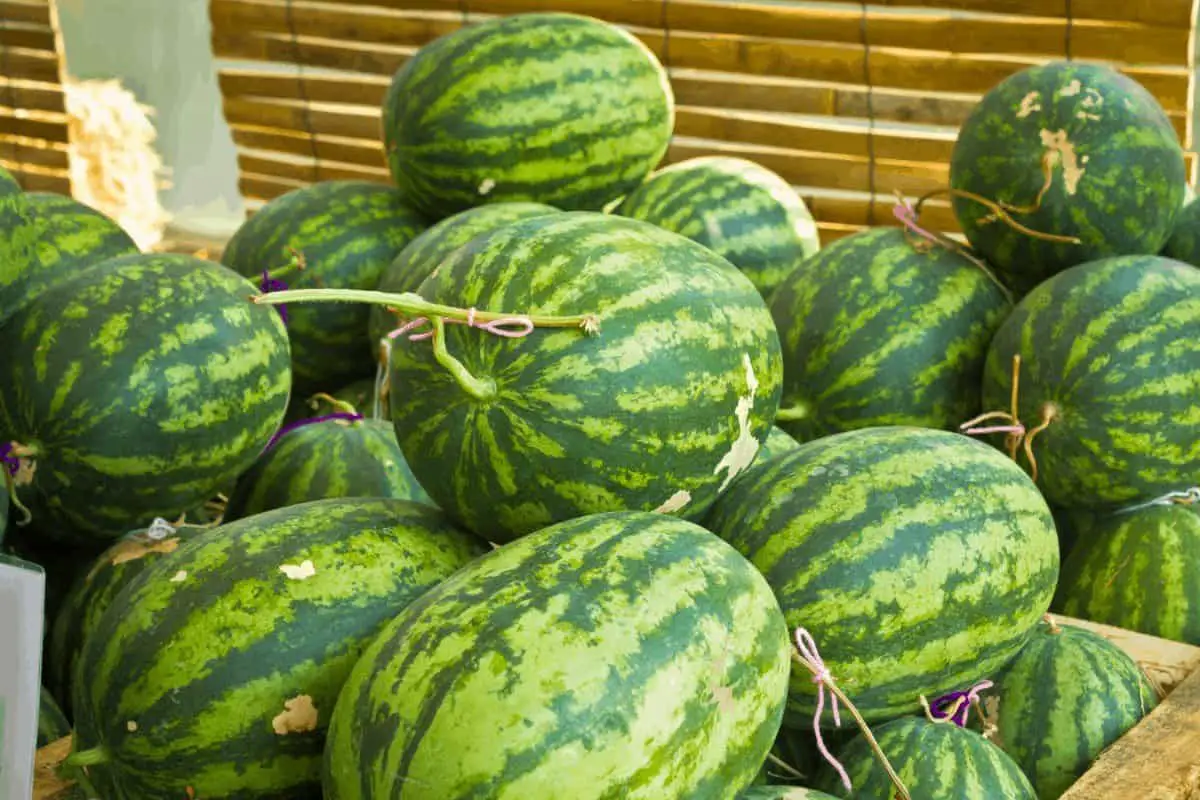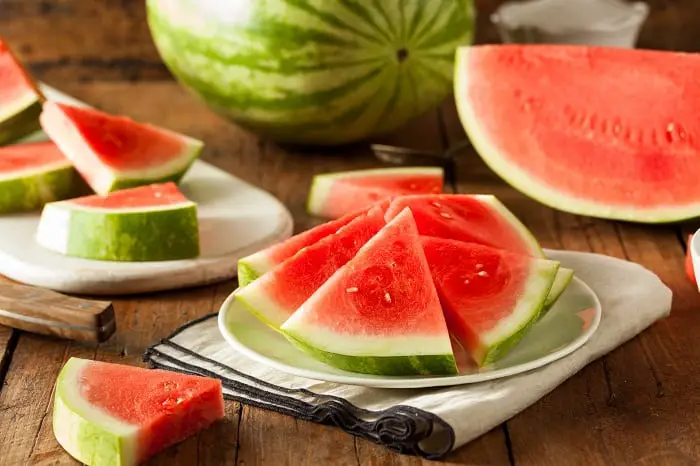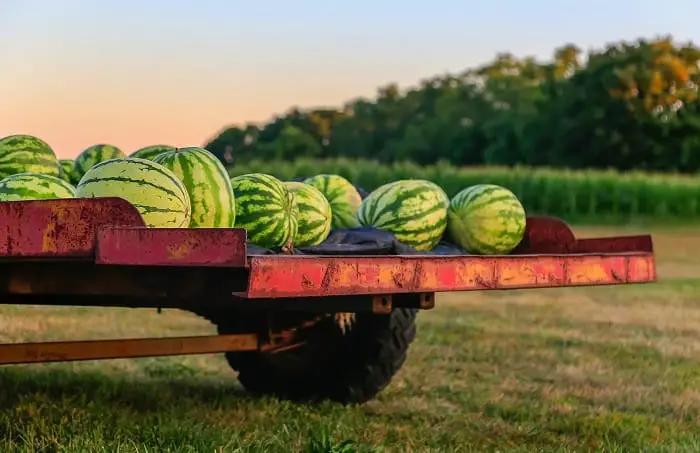There is a belief in some circles that watermelons can be differentiated on the basis of their genders like humans and animals. For instance, it is believed that ‘boys’ have an elongated shape, watery taste and big. On the other hand, ‘girls’ have a round shape and are very sweet.
Contrary to this popular belief, there is no such thing as boy vs girl watermelon. As such, this article sheds more details about the development of watermelons. It also gives you tips about how to pick the juiciest and sweetest watermelon.
Table of Contents
Development Process of Watermelons
A watermelon plant belongs to the cucurbit family and it can only produce fruit after pollination has taken place. The plants that belong to this category produce both female and male flowers. Pollen that comes from male flowers ought to go into female flowers to enhance pollination that leads to the development of the fruit or offspring.
A watermelon plan can be self-pollinating meaning that it can reproduce without any need of another watermelon plant. However, pollen from male flowers ought to be transported to the female flower to produce the fruit in a process called pollination.
Naturally, insects like wasps, bees, and other creatures seeking nectar that move from one flower to the other help to distribute pollen. Bees play a significant role in promoting watermelon pollination and some farmers can even hire bees to perform this function.
It is crucial that the bees are present when the watermelon flowers bloom since they open for a short time. The watermelon field should also be free of other fragrant plants during the watermelon growing period so that the bees are not attracted to these plants which can affect the rate of pollination.
Essentially, watermelon plants can be both female and male simultaneously but they produce male flowers and female flowers. However, the fruit itself has no definitive gender. In other words, the fruit is gender-neutral, contrary to what other people believe pertaining to male and female melon. The fruits produce seeds that can help to make more plants to enhance continuity of the above reproductive cycle.
What Determines the Taste of Watermelons?
Wondering about the factors that contribute to the varying size and sweetness of the watermelon? Different elements such as the amount of rain, temperature as well as environment determine the sweetness as well as the varying size of the watermelon.
A lot of rain can cause the watermelon to lose its sweetness while variety can also contribute to the size and taste of the watermelon. For instance, there are more than 300 types of watermelons in the US and South America according to the Watermelon Board. The most common types of watermelons are seedless, seeded, mini and yellow/orange.
How to Tell If a Watermelon is Ripe?
Besides the divergent view against the existence of male vs female watermelons, there are certain measures that can be used to taste if the watermelon is ripe. The first thing is to look for a firm watermelon that is free of bruises, dents or cuts. It should appear raw and intact such that you will never see any defects on its skin.
However, you should be able to identify field spots on the watermelon which indicate the side on which it was resting in the field. The spots vary in color and some are white, beige while others are gold. A watermelon with a gold color is the perfect pick for you since it indicates that it has reached its peak.
The other thing that could help you to choose a ripe watermelon is to lift it and it should feel heavier than you would expect considering its size. The other trick that you can try is to tap the watermelon and it should produce a dull and hollow sound if it is ripe and juicy. Unripe or overripe watermelons usually do not produce the same sound if you tap them.
The size of the watermelon can also help you to determine its taste. Bigger watermelons have water taste while smaller ones with round shape are juicy and sweet. If the watermelon received large volumes of water during its growth stage, it can have a watery taste. Sweet melons should receive an average amount of moisture during their growth stage.
The brown webbing on the watermelon can also help you to determine if the watermelon is juicy. The webbings show the number of times the bees touched the flowers. This means that the higher the concentration of webbings, the higher the level of pollination which in turn spells sweetness.
You can also check the stalk of the watermelon to determine if it is ripe. A dry stalk means that the watermelon is ripe while a green one shows that it is not yet ready for consumption.
Above all, it is crucial to pick a watermelon with seeds since you can use them for medicinal purposes and they are delicious if roasted. The seeds of the watermelons are perfect for urinary tract and kidney health. In other words, the seeds can act as a natural remedy to certain conditions that can affect our health.
The watermelon, on the other hand, is anti-inflammatory and can help resolve problems such as diabetes, arthritis, heart problems as well as asthma. Watermelons are also rich in Vitamins A and C while at the same time they have a high level of antioxidants. Thus, watermelons are not only delicious but they are good for your health too.
Conclusion
I hope you have enjoyed reading this article and are now clear about the male vs female watermelon myth. Now that you know that a single watermelon plant can produce both female and male flowers but to produce fruit, male pollen must get into the female flower. However, the offspring is gender-neutral.
There are different factors that determine the sweetness or juice of the watermelon contrary to popular belief that ‘girl’ melons are sweeter than ‘boy’ melons. You also need to physically inspect the watermelon to be in a better position to choose the tastiest one. You can leave your comments or questions below.



